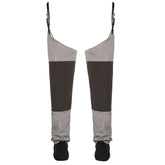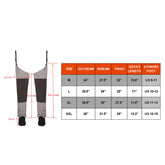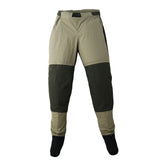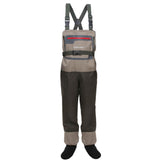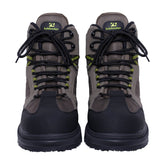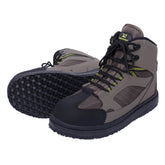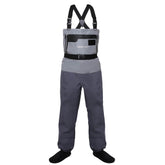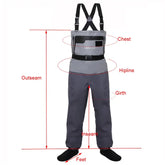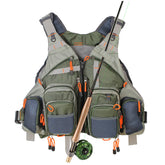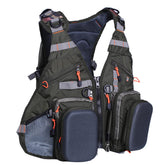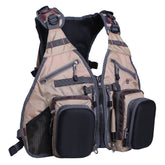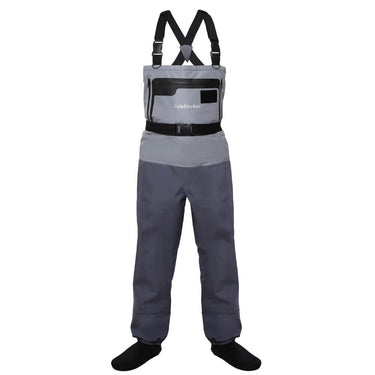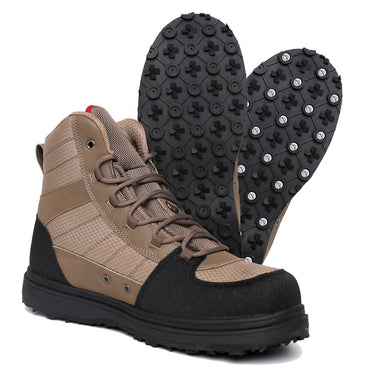The Complete Guide to Fly Fishing for Brown Trout
Over the course of ten years, I’ve been traveling across the country fishing for brown trout. While I’ve fished in different areas, I always try to bring my fly rod with me when I’m in the pursuit of catching these fish. Brown trout are incredibly resilient and beautiful, and they can be found in every region of the country.
STEPS FOR CATCHING BROWN TROUT WITH A FLY ROD
There are several steps that you'll need to follow in order to successfully land a brown trout on a fly rod. By focusing on these steps, you can easily land beautiful fish.
1.Before you start fishing, it's important that you choose the right gear. In addition to a medium-weight fly rod, you'll also need a matching reel, a dry and wet fly, and a floating line.
2.After you have the proper equipment, focus on finding areas that have brown trout. Brown trout can be found in every region of the country, and you can find the best locations by going to the Game and Fish Department's website.
3.After reaching your destination, it's time to look for the hiding brown trout in the water. There are many areas that you can find that are ideal for fishing, such as pools, seams, and riffles.
4.When choosing the right flies, it's important to determine what the brown trout are eating. This can be done by checking the rocks, looking for bait in the water, or catching insects.
5.One of the most important factors that you should consider when it comes to fishing for brown trout is the quality of the casting technique. If you're not able to put a good cast on the water, you'll probably not be able to land many fish.
6.After casting and drifting the fly, it's important that you keep the fly on the right line. This will allow you to land the fish. Unfortunately, many fly anglers fail to present the fly in a natural manner.
SELECTING FLY FISHING GEAR FOR BROWN TROUT
If you've ever been a fly fisherman, you know that the right equipment is necessary to land brown trout. Although these fish are similar in size and power to other trout species, you still need to have the proper gear to successfully land them.
Fly Rod
There is no perfect fly rod for brown trout. The type of rod that you use for fly fishing for this species will vary depending on where you are located and how you are fishing. For instance, if you are primarily focused on fishing in smaller rivers and mountain streams, you'll need a medium-speed rod with a weight range of 3 to 8 pounds.

If you're fishing in medium-sized rivers, a 4 or 5-weight fast action rod is ideal. This type of rod can be used for dry flies and high stick nymphs. Also, the added length will allow you to cast long casts using this rod. Although it's not a massive rod, this versatile tool will do well in both larger and smaller bodies of water.
If you're planning on fishing for large lakes and rivers, then a 5- or 6-weight rod is ideal. These are long and powerful rods that will allow you to cast and fight any brown trout that you come across. These types of rods are also great for handling dry flies, nymphs, and streamer patterns.
Czech nymphing is a type of fly fishing that involves using special rods. These are usually 2 to 3-weight rods that are about 10 to 12 feet long. These are ideal for fishing in smaller bodies of water and are ultra-sensitive. These rods allow you to get the best out of your nymph by casting it deep.
Fly Fishing Reel
When choosing a fly fishing reel for brown trout, make sure that it matches up with your rod's weight. For instance, if you're using a 4-weight rod, make sure that your reels are weighted properly. Having the right balance will allow your entire setup to feel more balanced.
A durable and fully-sealed drag system and an oversized arbor are some of the features that will give you peace of mind when it comes to fishing for brown trout.
Fly Line
Depending on the type of fishing you're doing, your fly line might be a bit different. For instance, if you're planning on using dry flies, you might want to use a floating line instead of a traditional one. Also, if you're fishing water that's below 15 feet deep, a floating line might be ideal.
A sink tip line is also useful if you're fishing in large rivers or still water. When it comes to using streamers for brown trout, you need to make sure that you're casting them deep enough.
When it comes to choosing a fly line for brown trout, make sure that it matches up with your rod's weight. For me, I prefer to use a fly line that's one-pound heavier than my rod and reel.
Leader and Tippet
When it comes to fishing for brown trout, tippet and leader are important. Although brown trout are known to be very tolerant of flies, they can still be a bit unpredictable. Having the right size and tippet will allow you to land the flies that you're planning on using.
For nymph fishing, a 3 or 4x 9-foot leader is ideal. If you prefer to keep your line more concealed, you can use a 7-foot leader with a tippet attachment.
If you're planning on using dry flies, a 3x-7-foot leader with a tippet of 4x or 5x is ideal for brown trout.
If you're planning on using a combination of these two leaders, make sure that you're using a 0x and a 3x leader. Since you don't want to have one of those large brown trout break your line and ruin your chances of landing a trophy, you should use a 3x leader.
FAVORITE FLIES FOR BROWN TROUT
Although brown trout flies are typically based in a country's region, there are a couple of patterns that will work well regardless of where you're fishing.

The Woolly Bugger is one of the best flies for brown trout. Due to how effective it is, it was under consideration by government officials to be banned. Fortunately, the government still allows us to use this fly. This fly is a streamer that's designed to represent various types of fish, such as leeches, baitfish, and crayfish. It can be used either dead drift or swing.
If you're planning on fishing early in the season, you might want to use a pheasant tail to target blue winged olive flies. You can see what's eating around rocks and logs, and a pheasant tail nymph will most likely look close enough to what you're looking for. This fly will land you in the fish.
One of the most common patterns that you should have in your bag is the crayfish, as many streams in the Midwest are filled with this type of fish. Brown trout will eat crayfish, and without them, you won't be able to catch many fish. You can bounce these around the bottom and wait for them to fall into the water column using a drop shot.

If you're not sure what's eating around the surface, but you're still planning on fishing for brown trout, then you might want to use an Elk Hair Caddis. These are great searching flies that imitate a couple of dry fly patterns.
If you're a fan of dry fly fishing, then the Chubby Chernobyl is a great choice. This fly is usually cast in the slack water near the bank and will most likely get hit by a big fish.
One of the best patterns that you can use for searching is the Hare's Ear Nymph. This fly is a buggy-looking fly that's designed to attract fish. It can hold its own in fast-moving water and can entice them to eat. To get the most out of this fly, you should stay patient and stay focused on getting the fish to bite.
HOW I LIKE TO SET UP MY FLY ROD FOR BROWN TROUT
Although there are a couple of unique elements that I add to my setup for brown trout fishing, I mainly stick with the same methods for the most part.

Fly Rod
I prefer to float between using a medium-sized fast action rod that's 8'6” long. If I'm fishing for bigger fish, I usually use a 5-weight rod. With this, I can make long casts and have the power to target bigger fish.
I usually use a medium-sized rod with a moderate action that's designed for dealing with small streams. I also have a Euro Nymphing Rod that I usually bring with me when I'm targeting difficult-to-catch fish. This rod, which is about 11 feet long, gives me the best chance of landing these finicky brown trout in heavily pressured areas.
Fly Reel
I have several different types of fly reels that go with my different rod setups. These are all set up to fish for brown trout. I also have a couple of extra spools that have different lines for different water conditions.
Fly Line
Most of my brown trout fly fishing is done with the weight forward floating line. I prefer to cast this line because it's the easiest to use. However, when I'm fishing large bodies of water, I usually use a sink tip line. This allows me to cast my flies deeper.
I prefer to use a heavier fly line than the one that I use for my rod and reel. For my setup, I will use a 4-weight line, while I will use a 5-weight line. This allows me to feel more comfortable with my setup.
Leader
When I'm fishing with nymphs, I prefer to use taper leaders. I believe that this type of leader is more effective than using a tippet. When I'm fishing with a streamer, I usually use a non-tapered leader that's about 7 feet long. These are heavy and won't knot themselves up when I'm casting long casts.
When I'm fishing dry flies, I usually use a 3x or 4x non-tapered leader and a couple of feet of either a 4x or 5x tippet. Depending on the type of water that I'm fishing, I'll usually go smaller or larger. I prefer to use a surgeon's knot when attaching the leader to the tippet.
Flies
When I'm not fishing with a fly rod, I usually spend my time fishing with a streamer. This is my first love, and I love the anticipation of seeing a fish take a fly. Some of my favorite patterns that I use are the Woolly Buggers and the crayfish patterns.
I'm a huge fan of the productive patterns that are known to be produced using pressured nymphs. Some of my favorite patterns that are commonly used are the Stonefly nymphs and the Elk Hair Caddis. If I'm fishing dry flies, I try to match the hatch using these patterns. However, if I can't find a good match, I'll usually use the Parachute Adams or the Chubby Chernobyl.
WHAT ADDITIONAL GEAR IS GREAT TO HAVE WHEN FISHING FOR BROWN TROUT
Besides your rod, line, and flies, you also need other accessories when it comes to fishing for brown trout.
Polarized Sunglasses
One of the most essential pieces of equipment that an avid fisherman should have is a pair of polarized sunglasses. These are not only great for keeping track of the fish you're targeting, but they also provide a better idea of the structure that you're fishing in.
Net
One of the most important pieces of equipment that an avid fisherman should have is a net. This is because, without this type of equipment, you'll most likely not be able to properly handle the fish that you're trying to catch.
Forceps
Another essential piece of equipment that an avid fisherman should have is a pair of forceps. This is because, without this type of tool, you'll most likely not be able to properly remove the hook from the mouth of a brown trout.
Waders and Wading Boots
When it comes to fishing for brown trout, you need to have the proper equipment to get in the water and cast for these fish. Having the right pair of wading boots and waders will allow you to get in the water and cast for these fish.
WHERE TO FIND BROWN TROUT
Although brown trout can live in both still and moving water, there are different techniques that can be used to catch them.
Fishing for Brown Trout in Moving Water
Brown trout often spawn in streams and rivers, which provides ample opportunity for anglers to land these fish. Knowing how to read the water will allow you to land these fish.
Fish for Brown Trout in Pools
When fishing for brown trout, you'll most likely find them hiding in the pools. They will either be at the front or back of the pools to wait for food to arrive. If the temperature gets warm during the day, these fish will move to the deepest part of the pool to cool down.
Casting from the front or the rear while fishing a pool is also a good way to get a natural drift. This method requires you to let your fly drift into the water until it reaches the bottom. If you're casting a nymph or streamer, let it sink in the water column and allow it to get deep.
When you're casting a fly, let it drift across your body until it reaches the bottom. Then, move it a bit on the swing and allow it to move around. For nymphs and streamers, you can use a couple of hard strips near your body to attract the fish. Make sure that your fly is leading the charge and everything looks natural.
Fishing for Brown Trout in Pockets
You'll most likely find brown trout in pockets, which are areas of slack water behind logs or rocks. While there are usually only a couple of fish in these areas, they'll be productive because most anglers won't bother fishing them.
Make sure that you're close to the area where you're fishing. If you don't, your line will likely be pulled in various directions, and the drift will look unnatural. To avoid this, set up close to the pocket and cast a couple of yards upstream. Small and medium-sized flies are ideal for this type of fishing.
When you're casting a fly, raise your rod tip as you're pulling it into the pocket. This will allow you to quickly land the fish.
Fishing for Brown Trout under Cut Banks
One of the best places for anglers to land brown trout is in cut banks. These are usually deeper than you would expect, and they're often difficult to access. To get the fish to bite, you can try casting a shallow-motion fly with your arm in order to get it up and under the cut bank.
Fishing for Brown Trout in Seams and Runs

You'll also need to look for brown trout in the seams. These are the sections of water that have white foam inside, which represent food. In order to keep as much fly line as possible in these areas, you'll have to high-stick your way down the seam. Cast into these areas or right along the seam.
Fishing for Brown Trout in Still Water
The fishing method for brown trout in still water is fairly simple. You'll most likely be using dry flies or nymphs for the majority of your time.
Find Structure
Brown trout are known to be very sensitive to their environment, so they'll hide in places that are not ideal for fishing. This is why you'll need to find structures that are made of rock or fallen logs. Spend a lot of time around these areas in order to locate the fish.
Look for Rises
In still water, there are often fast-moving hatches. To locate the fish that are eating an insect, focus on any rise that you can see. Also, try to match the dry fly that you're using to the rise. Since the fish will feed more often in the same area, casting out to the rise that you saw could lead to another strike.
WHEN IS THE BEST TIME TO FLY FISH FOR BROWN TROUT
Brown trout are known to be incredibly productive throughout the year, making them a unique species. Although there are certain times when they'll be more productive, you have a chance at every opportunity.
Time of Year
The majority of brown trout's spawning occurs in the fall. If you're fishing in areas where it's illegal to target these fish, you should check your local regulations. The spring and early fall are known to be incredibly productive, as these fish will either be fed after a long winter or they will be fattening up for the summer. During the summer, you can expect to see them in the mornings and evenings.
Fish prefer to feed in water between 60 and 65 degrees.
Time of Day
Mornings and evenings are known to be productive times for brown trout, as they will feed during these times. When insects hatch, the fish will know that it's time to feed. The productive period is from the beginning and end of the day.
DIFFERENT FLY FISHING TECHNIQUES FOR CATCHING BROWN TROUT
There are a variety of ways to catch brown trout, and dry flies, nymphs, and streamers are some of the most popular choices.
Fishing for Brown Trout with Dry Flies
When using dry flies, you should check for rises that are visible during the mornings and evenings. These are often the areas where the fish are looking for food. If you're using a 7 to 9-foot leader, you can use a tippet attached to it.

Fishing for Brown Trout with Nymphs
Prior to a hatch, nymph patterns are often productive. To get the most out of your time with nymphs, you should use a 9- or 8-foot taper 3x leader. You should also limit the amount of fly line that you use in the water.
Fishing for Brown Trout with Streamers
When using a streamer, you should be casting across deep sections of the water column. You can also fish the flies on the swing. You can spend some time in pools and deep water by casting upstream.
TIPS FOR CATCHING BROWN TROUT WITH A FLY
Although learning how to fish for brown trout can be challenging, there are still a few tricks that you can use to improve your chances of success.
What Happens if Fish Aren’t Rising?
If the fish aren't rising, you should be focusing on wet flies. These are typically found below the surface and can be used in areas where the fish are looking for food. You can also learn how to set up a basic nymph rig.
If you don't know what to use when you visit a body of water that looks promising, try searching for patterns such as the Woolly Buggers, Royal Wulffs, and the Pheasant Tail Nymphs. The sport of fishing is full of trial and error.
FIGHTING, NETTING AND HANDLING BROWN TROUT
Once you’ve hooked your fish, the work has just begun.
Fighting Brown Trout
One of the most important factors that you should consider when it comes to fighting brown trout is how quickly you can get the fish in your net. Since most brown trout are around four pounds, you won't have a big battle on your hands. If you can get a couple of minutes of action, you might have a chance to land the fish.
Handling Brown Trout
Before you handle a brown trout, make sure that you wet your hands thoroughly. This will allow you to remove the protective slime that's on your hands. After keeping the fish in the net for a couple of seconds, take a quick picture of it, and release it back into the water.
LAST CAST FOR BROWN TROUT
Although brown trout are commonly accessible to everyone in the US, they will still give you their all in a fight. If you're planning on fishing for them, take the time to learn how to catch them. In addition to having the skills to fight them, you should also have the necessary equipment to make the most of your time.
Article refer:
1.How we guard brook trout?
2.Trout Fly Fishing: 3 Bad Habits to Break
3.The Complete Guide to Fly Fishing for Brown Trout
4.A guide to catching aggressive fall brown trout
5.Triploid Trout(Why so Big!)
6.Four Best Tailwater Trout Fisheriesof the Region's
